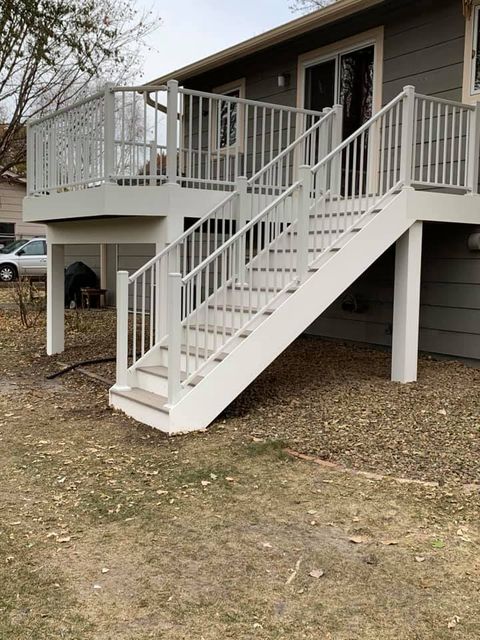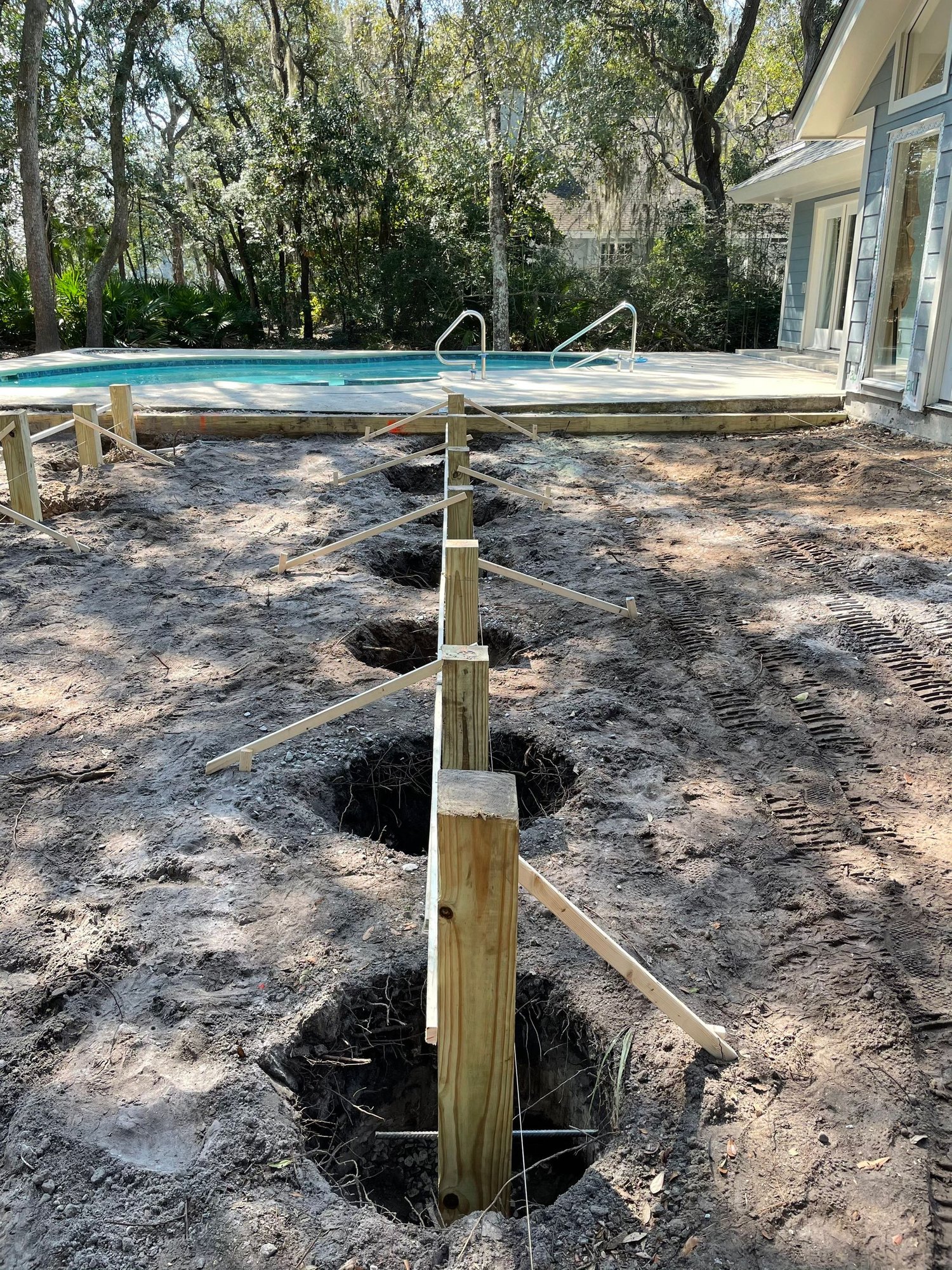Make Certain Stability and Durability With Properly Set Up Deck Grounds
Deck grounds might not be the most extravagant aspect of deck building, however they play an important role in ensuring security and long life. In this conversation, we will certainly explore the importance of correct deck grounds, aspects to think about during installment, various types of grounds offered, step-by-step installation guide, and maintenance pointers for making sure lasting footings.

Significance of Correct Deck Grounds
Why are correctly set up deck grounds critical for the stability and durability of your deck? The response hinges on the fundamental role that deck footings play in supporting the weight of the entire structure. Deck grounds are the structure on which the deck relaxes, moving the lots from the deck to the ground. When footings are not properly set up, it can cause a series of concerns that compromise the stability and longevity of the deck.
First of all, appropriately mounted deck grounds distribute the weight of the deck evenly, avoiding any type of unequal settling or sinking. This is particularly vital in locations with unstable dirt, as it aids to alleviate the risk of the deck changing or collapsing. In addition, well-installed footings guarantee that the deck remains degree, stopping any kind of architectural damage that can occur when a deck ends up being unequal.
Second of all, appropriately mounted footings provide a strong anchor for the deck, preventing too much motion and sway. This aids to preserve the structural honesty of the deck, decreasing the risk of injuries or accidents. It additionally reduces the wear and tear on the deck, permitting it to endure the components and routine usage for a longer period of time.
Factors to Think About for Deck Ground Setup
When mounting deck footings, there are numerous essential variables to consider for correct installation. These aspects can greatly affect the security and durability of your deck. You need to figure out the kind of soil on which the deck will be constructed. Different soil types have various load-bearing capacities, so it is vital to conduct a soil test to make certain the footings can support the weight of the deck and its passengers. In addition, the location and design of the deck need to be carefully prepared to prevent any kind of obstacles such as trees, utility lines, or underground pipes. It is likewise crucial to consider the neighborhood climate and weather, as these can impact the longevity of the grounds. Regions with a high water table may require extra procedures to stop water damage. The dimension and product of the grounds must be selected based on the size and weight of the deck, as well as the regional building codes and regulations. By considering these factors, you can ensure the correct installment of deck grounds and take pleasure in a steady and resilient deck.
Kinds Of Deck Grounds to Pick From
There are a number of different kinds of deck grounds available for you to select from. Each kind has its own benefits and disadvantages, so it's necessary to consider your specific demands and the problems of your deck prior to making a decision.
One common sort of deck footing is the concrete footing. This involves digging holes in the ground and putting concrete right into them to create a strong foundation. Concrete footings are long lasting and supply exceptional security, making them appropriate for decks in areas with challenging soil conditions or high wind lots.
An additional alternative is the helical pier footing, which includes a steel shaft with helical plates that are screwed right into the ground. These grounds fast to install and can be made use of in numerous soil types, including sandy or clay soils. They are additionally adjustable, enabling simple progressing of the deck.
Sonotube grounds are another preferred option. These footings are produced by placing a cardboard tube in an opening and filling it with concrete. Sonotube grounds are relatively very easy to set up and give appropriate stability for smaller sized decks or in areas with much less demanding soil problems.

When choosing the sort of deck footing, it's essential to consider elements such as soil conditions, deck size and weight, local structure codes, and individual choices. By picking the ideal ground kind, you can make certain the stability and long life of your deck.
Step-by-Step Overview for Installing Deck Footings

Determine the place: Start by noting the precise placement of each ground using stakes and string (Deck Footings). Consider any regional building ordinance or regulations concerning trouble distances
Dig the holes: Utilize a blog post hole digger or an auger to dig the holes for the grounds. The deepness will certainly depend on the frost line in your area and the type of dirt. Usually, a deepness of a minimum of 36 inches is recommended for stability.
Degree the openings: Make sure that all-time lows of the openings are degree (Deck Footings). This can be achieved by using a level or a straight board across the top of the holes
Add gravel: Place a layer of gravel at the end of each hole to improve drainage and prevent the footing from penetrating the soil in time.
Insert the footing forms: Insert the footing forms into the openings, guaranteeing they are focused and degree. Usage risks to protect them in location.
Mix and put concrete: useful content Comply with the directions anchor on the concrete mix bag to prepare the concrete. Pour the concrete into the footing kinds, loading them entirely.
Smooth the surface area: Utilize a trowel to smooth the surface of the concrete and eliminate any air pockets. Allow the concrete to heal according to the manufacturer's guidelines.
Upkeep Tips for Resilient Deck Footings
Proper upkeep is essential for ensuring the long life and security of deck grounds. By consistently inspecting and keeping your deck grounds, you can avoid damage and possible security risks. One essential element of maintenance is to routinely look for any signs of deterioration, such as cracks or activity in the footings. It is crucial to address them promptly to prevent additional damages. if you observe any type of issues.
Regular cleansing is also necessary for maintaining deck grounds. Vegetation, dirt, and particles can gather around the footings, which can cause moisture buildup and decay. Cleaning up the grounds regularly, using a stress or a brush washing machine, can help avoid these problems and expand the life-span of your deck.
In addition to cleaning, it is essential to maintain the location around the grounds free from any kind of obstructions. Avoid stacking products versus the grounds or permitting plants to grow as well near to them. These blockages can catch moisture and cause the footings to wear away in time.
Finally, routine resealing of the footings is suggested to safeguard them from wetness and various other environmental elements. Applying a water-proof sealer can aid protect against water damages and extend the life expectancy of the footings.
Final Thought
To conclude, appropriate setup of deck footings is important for making sure stability and longevity of your deck. Factors such as dirt kind, tons capability, and local building ordinance require to be taken into consideration when selecting the best sort of deck grounds. Adhering to a detailed guide for installation and normal upkeep will aid to make certain the grounds stay resilient and long-lasting.
In this discussion, we will discover the significance of proper deck grounds, aspects to think about during installment, various types of grounds offered, detailed installment guide, and upkeep ideas for guaranteeing long-lasting grounds. Deck footings are the structure on which the deck rests, moving the load from the deck to the ground.One usual type of deck ground is the concrete footing. Put the footing forms: Put the footing forms right into the holes, guaranteeing they are centered and degree.In conclusion, correct setup Discover More Here of deck grounds is important for ensuring security and longevity of your deck.